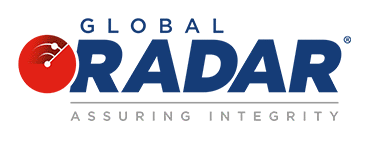Increasingly strict Anti-Money Laundering and Counter Terrorism Financing regulations continue to set the tone for the global financial services industry. Regulatory compliance requirements are on the rise and a number of new rules now require banks, credit unions, broker-dealers, and trust companies to perform more rigorous customer due diligence as part of the client onboarding process. Furthermore, financial services firms are required to monitor ongoing account transactions for suspicious activity and have a reasonable basis to know the essential facts concerning every customer account.
The cost of keeping up with these expanding regulatory expectations is growing. Many financial institutions feel the pinch from rising personnel costs and undue regulatory risk. The fact is that despite the digitization of business today, many financial institutions continue to rely on manual checks on paper or disparate pockets of technology to ensure compliance. This approach is simply no longer practical from a cost perspective, and is no longer adequate to ensure compliance with evolving and demanding regulatory expectations.
Risk and Penalties
Ever since the creation of the U.S Patriot Act and various United Nations security counsel regulations aimed to prevent the financing of terrorist acts, financial institutions find that being in compliance with regulatory expectations is more challenging than ever before. Banks, credit unions, brokerage firms, and asset managers that do not take an aggressive approach to compliance are at increasingly high risk of substantial penalties and fines.
Compliance Case Study – HSBC
The cost of regulatory non-compliance is high. One example is Europe’s biggest bank, HSBC. The bank made headline news recently for setting aside $1.15 billion to cover potential U.S. fines for failing to stop money-laundering in its Mexican unit. Analysts speculate that eventual penalties could be in fact significantly higher. HSBC is not the only financial institution facing hefty fines for non-compliance. Over one billion dollars has been assessed to banking, credit unions, investment and financial services firms for non-compliance with OFAC statutes in just the last two years.
HSBC believed they had adequate processes in place. But when examined more closely by auditors it became clear that their compliance systems fell short of the mark.
The cost and risk doesn’t stop at fines and penalties. If regulators are able to prove that an institution has not been compliant, judgments often require the firm to perform an expensive and time consuming two year look-back investigation to ensure the compliance integrity of their systems and transactions. This typically requires a team of expensive consultants and can cost tens of millions of dollars. To add insult to injury, many firms find this money is ironically spent on hiring people to re-do what they should have been doing all along.
HSBC, like most institutions, believed they were compliant and had adequate processes in place. But when they were examined more closely by auditors it became clear that their systems and methods fell short of the mark. Indeed, it’s not that institutions are not trying to comply, or are intentionally operating in violation of regulations; it’s simply that the current systems are not adequate to support the demand and risk involved. This will only become increasingly problematic as new regulations come online like the Dodd-Frank remittance transfer rule that took effect on February 7, 2013.
Specialized Compliance Management and Staffing
Financial organizations are investing more and more into staffing and people to ensure compliance. Indeed, the cost of compliance management and staffing a compliance department is a growing bottom line impact. As regulatory requirements go up so does the requirement for people and resources. Staying ahead of the compliance curve means that banks must invest more and more into specialized personnel and expertise. The cost of staffing in many cases far exceeds most if not all other departmental operating expenses. For many institutions the cost of human capital to manage their compliance program is one of the largest operating expense items on the balance sheet.
For example, a medium-sized bank with no regulatory order may have a 10 to 15 or more person compliance department consisting of the following:
Team Member Annual Salary
- BSA Officer – $150,000 to $250,000
- Assistant BSA Officer – $115,000 to $145,000
- 4 Senior Analyst – $80,000 to $110,000
- 5 Junior Analyst – $60,000 to $80,000
- 4 Clerical – $40,000 – $55,000
The compliance department salary costs alone in this example are over $1 million dollars. When those salaries are burdened by 30% to accommodate health care and employee benefits the cost of staffing a compliance department can easily reach a million dollars or more depending on the size of the institution.
The Pace of Compliance
The cost of compliance doesn’t stop there; if regulators are able to prove that the institution has not been compliant, judgments often require the firm to perform an expensive and time consuming two year look-back investigation to ensure the compliance integrity of their systems and transactions. This typically requires a team of expensive consultants and can cost tens of millions of dollars. To add insult to injury, many firms find this money is ironically spent on hiring people to do what they should have been doing all along.
Staying ahead of the compliance curve means that banks must invest more and more into specialized personnel and expertise.
Some banks are in a situation where unusual and suspicious activity has been reported to the BSA officer, but months or more go by before the account is reviewed and a SAR is finally filed. Falling behind can result in significant penalties – up to $250,000 per instance. But even in the face of these fines, institutions often fall behind simply because of the sheer volume and pace of administrative demand. For example, a medium-sized bank may have on average 500 alerts for suspicious or unusual activity generated on a monthly basis. All require human intervention. If a bank does not have sufficient resources month after month, that batch of 500 can quickly turn into 1,000…and then 1,500…and so fourth. The pace and volume compounds until only a small portion of the flagged instances has been reviewed. Without proper systems and tools most financial institutions must resort to hiring more staff and supplemental compliance contractors to keep pace.
Compliance Automation – Meeting the Challenges
Banks, credit unions, broker-dealers, and trust companies are under pressure to adhere with increasingly strict BSA compliance requirements. But that is difficult to do if you rely on paper-based and manual systems and procedures. A new breed of compliance software automation tools is providing the answer and financial firms should take a fresh look at the systems and procedures that ensure regulatory compliance. Automation can significantly reduce labor and staffing requirements while boosting the effectiveness of compliance efforts. Advanced systems streamline the client onboarding process, automate ongoing account due diligence, and provide a level of confidence in compliance activities that is simply not possible using teams of specialists and a manual workflow.
Compliance automation reduces compliance staffing requirements and helps the remaining team work smarter, not harder. Automation gives institutions the ability to do more with less people, but with the appropriate systems and solutions banks also maintain compliance more efficiently, more completely and more accurately than ever before. With staffing demands reduced, organizations are free to refocus their human resource investments into customer-facing and revenue-generating activities as opposed to funding teams that perform in a purely administrative role.
A Quiet Revolution
A quiet revolution is taking place as banks and other financial institutions make changes to long-standing compliance functions, especially as the scope of compliance becomes more difficult and the need to control costs becomes more pressing. Banks are under increasing pressure to remain compliant Anti-Money Laundering and Counter Terrorism Financing regulations but that is difficult to do if you your compliance processes are based on manual workflow and ad hoc pockets of technology. A new breed of compliance automation tools provides an answer with a solution that many financial institutions have successfully deployed.
Compliance automation is one important area of opportunity for institutions looking to reduce staffing costs and improve team compliance performance. But achieving the benefits automation will require the right combination of technologies – including client onboarding, transaction monitoring and list-check services.

